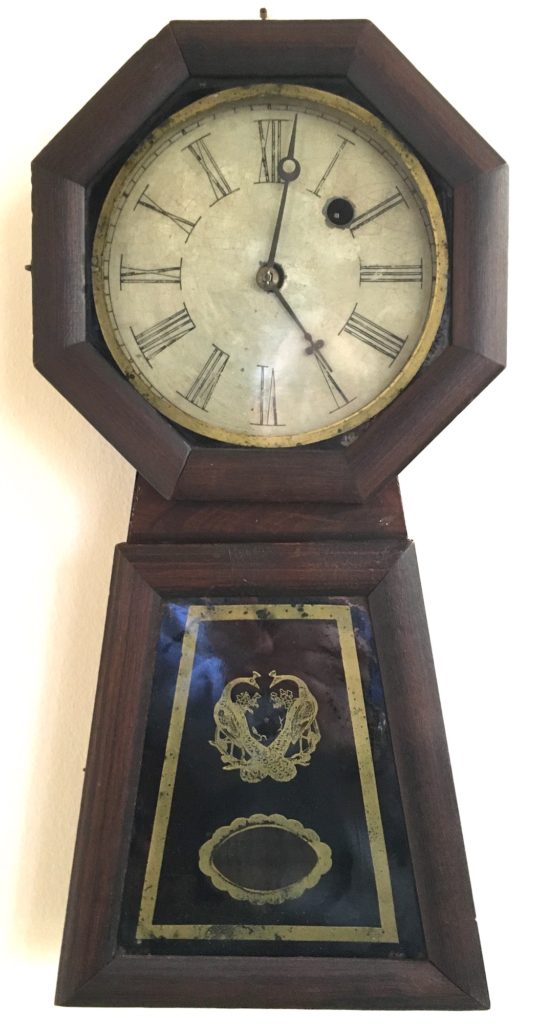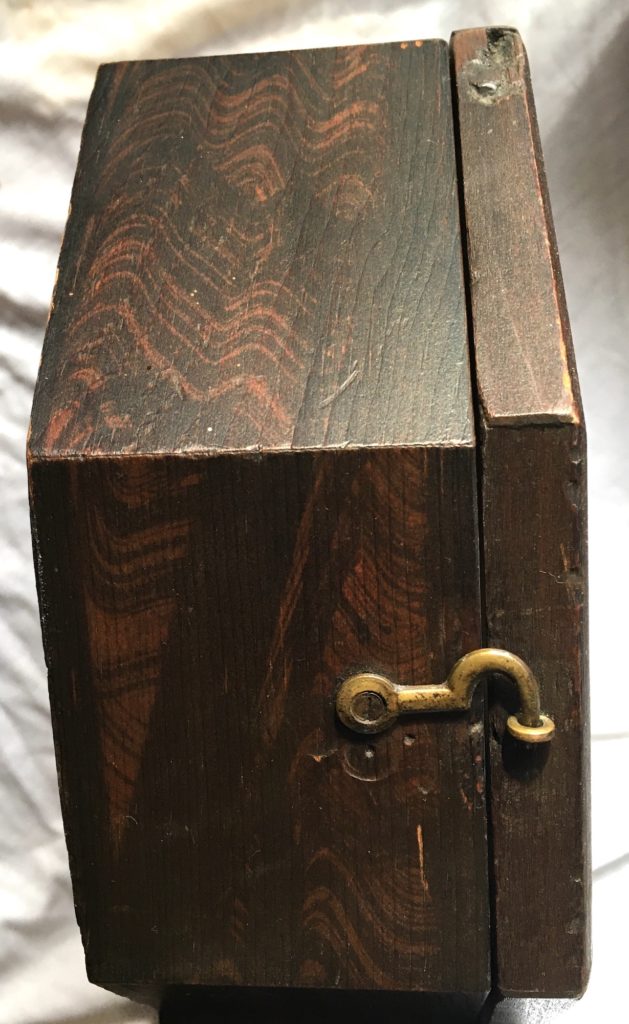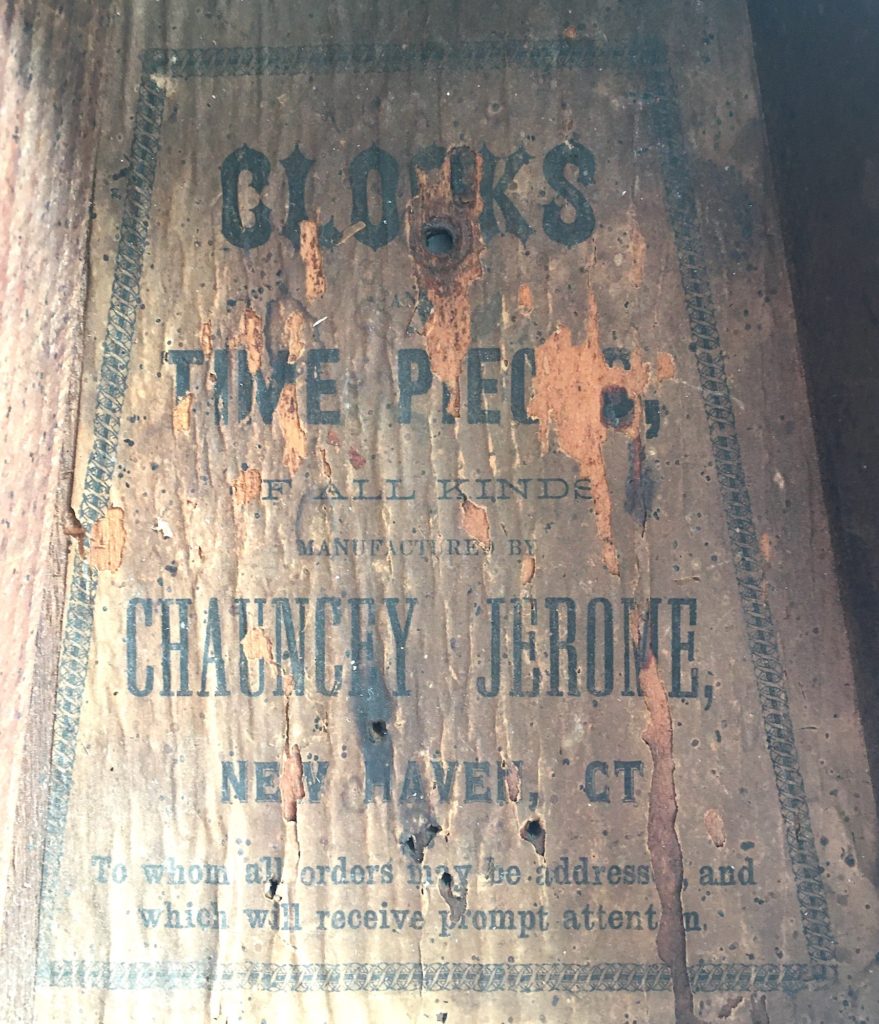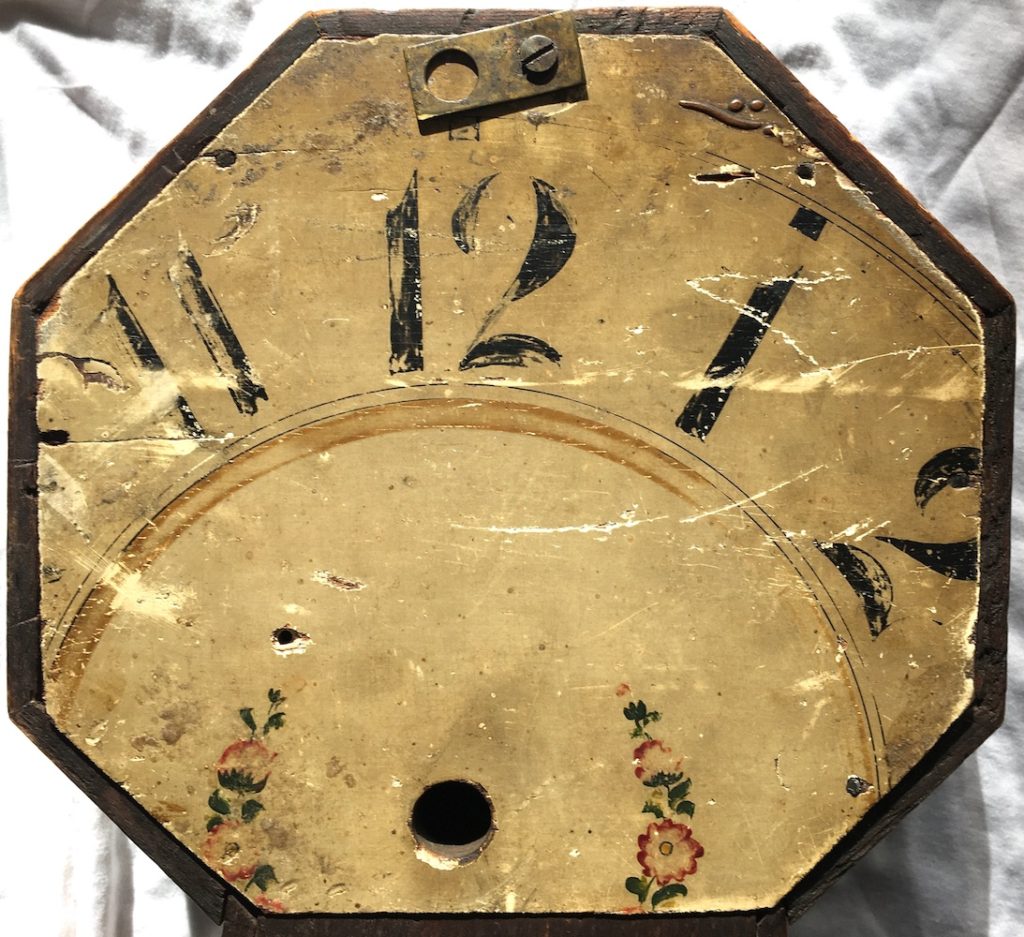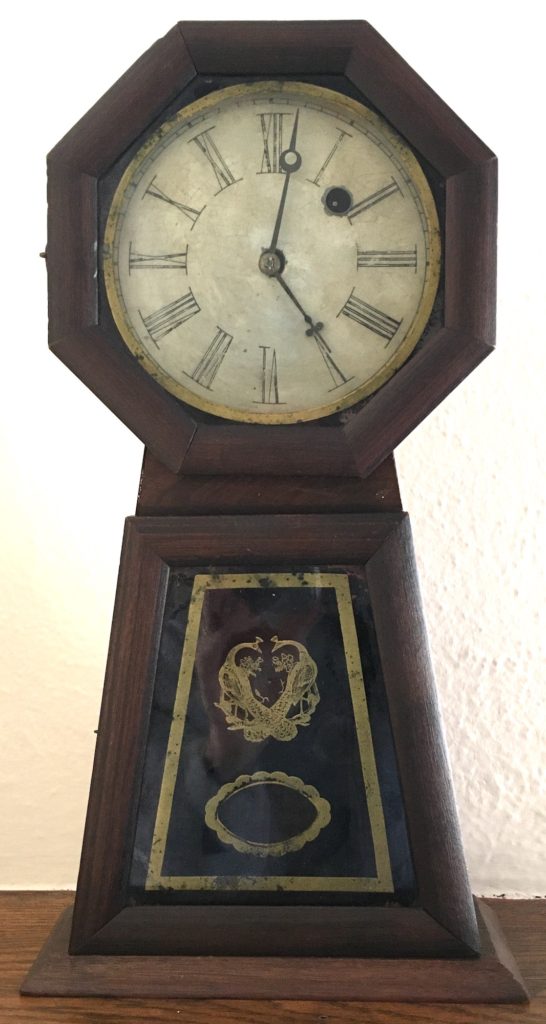A Chauncey Jerome keyhole timepiece has been on my wish-list for many years, so I was very pleased when this one fell into my lap. Jerome apparently made three variations on the keyhole theme: a 30-hr timepiece like this one (the most common), an 8-day timepiece in the same case as the 30-hr timepiece, and an 8-day timepiece in a slightly larger (but squatter-looking) case. Although these are stable enough to serve as shelf clocks, they were intended to be hung from the wall. I hesitate to put a date on these timepieces, because clues are few. They do not appear in the 1852 and 1853 trade catalogs, but it’s not clear whether the trade catalogs display the full Jerome inventory. Although it’s not a firm date, the movement (see below) suggests a date of 1854-1856.
Some cases are described as black lacquered, others as mahogany, and still others as faux grain-painted. The grain painting on this one is reasonably well-preserved.
Unlike many other Jerome labels, the ones in the keyhole timepieces are unique to this case style, because they’re tapered to fit in the lower portion of the case. There’s no printer’s line on these labels.
Front view of the 30-hr time-only movement. A couple of features mark this as not being a movement made by Jerome or the New Haven Clock Co.: the square foot to the escape wheel bridge (Jerome’s were typically cut at an angle, even when not necessary to keep it from hanging over the edge of the plate) and the curvilinear spokes on the #2 and #3 wheels. The necks of Jerome’s escape wheel bridges are also shorter than the one on this movement. Using the bridge nomenclature of Lee Davis (NAWCC Bull., Vol. 323), it is a type A4.4e. These bridges are found on clocks by numerous makers, but the most likely candidate as a maker is the Ansonia Brass Co. (1854-1869, according to Spittlers & Bailey). I’ve previously reported on a Jerome patent case clock that was likely made when Chauncey Jerome was working for Wm. L. Gilbert after Jerome went bankrupt. That clock has a 30-hr time & strike movement, which I believe to be an Ansonia product, with the #2 and #3 wheels having curvilinear spokes. It also has an escape wheel bridge with square foot, though the position of the rivets classifies it as a type A4.3a.
Rear view of the movement that does a better job of showing the curvilinear spokes, especially on the #3 wheel.
The quirkiest feature of this timepiece is only revealed when viewing it from the rear. Either due to splits in the back or screw holes that could no longer hold the screws for the mounting blocks, the upper, octagon-shaped backboard was replaced. Apparently, the only piece of wood readily available was a dial from a wooden works clock.
Another later add-on is a base for it to truly function as a shelf clock.
